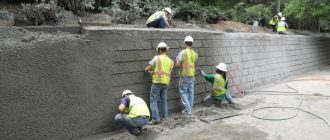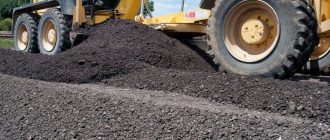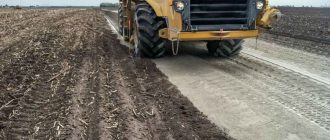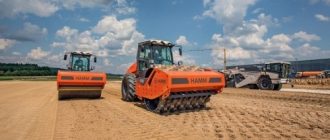
The Role of Geosynthetics in Effective Soil Stabilization
Soil stabilization is a crucial aspect of construction and infrastructure development projects. It involves enhancing the strength and durability of soil to provide a solid foundation for buildings, roads, and other structures. One effective method of soil stabilization is the use of geosynthetics, which are man-made materials specifically engineered to improve soil performance.
Geosynthetics have a vital role in soil stabilization, as they offer a wide range of benefits and applications. These materials are designed to be durable and long-lasting, making them ideal for use in high-stress areas. They can help distribute the loads from structures and prevent soil erosion, ensuring the stability and longevity of the construction.
The benefits of using geosynthetics in soil stabilization are numerous. Firstly, they can improve the strength and load-bearing capacity of weak or unstable soils, allowing for the construction of structures in areas that would otherwise be unsuitable. Secondly, these materials can provide effective drainage solutions, reducing the risk of water accumulation and potential damage to the structure. Additionally, geosynthetics can help control soil erosion and prevent the loss of valuable topsoil, promoting sustainable land use practices.
Geosynthetics find a wide range of applications in soil stabilization projects. They can be used in the construction of retaining walls, embankments, and slopes, offering support and reinforcement to the soil. They can also be employed in road construction and pavement rehabilitation, providing a durable and stable surface for transportation. Moreover, geosynthetics can be utilized in erosion control and land reclamation projects, restoring damaged or degraded soils to their natural state.
In conclusion, geosynthetics play a crucial role in effective soil stabilization. These man-made materials offer a range of benefits, including improved soil strength, enhanced drainage, and erosion control. From retaining walls to road construction, geosynthetics find wide applications in various infrastructure projects. Their use not only ensures the stability and safety of structures but also promotes sustainable land use practices. With their durability and versatility, geosynthetics continue to be an invaluable tool in the construction industry.
Importance of Soil Stabilization for Construction Projects
Soil stabilization plays a crucial role in ensuring the effectiveness and long-term sustainability of construction projects. The stability of the soil is paramount to the structural integrity of any infrastructure, such as roads, buildings, and bridges.
Effective soil stabilization techniques contribute to the improvement of the load-bearing capacity of the soil, allowing it to support heavy structures and traffic without experiencing excessive settlement or deformation. This is crucial for maintaining the safety and functionality of construction projects.
Soil stabilization helps address soil-related challenges that can arise during construction. These challenges may include soil erosion, water infiltration, and soil movement due to changes in moisture content and temperature. By stabilizing the soil, these problems can be minimized or eliminated, ensuring the longevity and performance of the construction project.
Furthermore, soil stabilization improves the construction process by providing a stable working platform for workers and construction equipment. With a stabilized soil foundation, construction activities can proceed efficiently and safely, reducing the risk of accidents and delays.
Various techniques can be employed for soil stabilization, including the use of geosynthetics, such as geotextiles and geogrids. These materials enhance the stability of the soil by reinforcing it and providing additional strength. Geosynthetics act as a barrier against soil erosion, preventing the loss of fine particles and preserving the soil structure.
| Soil stabilization techniques: |
|
In conclusion, soil stabilization plays a significant role in ensuring the success of construction projects. By improving the stability and load-bearing capacity of the soil, construction activities can proceed efficiently and safely. The use of geosynthetics further enhances soil stabilization and helps mitigate soil-related challenges. Effective soil stabilization techniques contribute to the overall performance, longevity, and safety of construction projects.
Understanding Geosynthetics: Definition and Types
Geosynthetics play an effective role in soil stabilization, offering a versatile solution for various applications. These materials are synthetic products made from polymers, such as polypropylene, polyester, or polyethylene, and are used in civil engineering projects to enhance the performance and durability of soil structures.
The main purpose of geosynthetics is to provide reinforcement, filtration, separation, drainage, and erosion control. By incorporating geosynthetics into soil stabilization projects, engineers can effectively improve the stability and structural integrity of the soil, prolonging the lifespan of the structures built on top.
There are several types of geosynthetics that serve different purposes:
- Geotextiles: These are permeable fabrics that are used for filtration, separation, and drainage. Geotextiles can prevent soil erosion and provide strength to the soil structure.
- Geogrids: These are high-strength polymer grids used for reinforcement and soil stabilization. Geogrids distribute loads and improve soil stability, making them essential in infrastructure projects.
- Geocells: These three-dimensional honeycomb-like structures provide confinement and reinforcement. Geocells are commonly used in earth retention systems and slope stabilization projects.
- Geomembranes: These impermeable sheets made of synthetic materials offer containment and barrier functions. Geomembranes are used in lining systems for landfills, reservoirs, and ponds.
- Geocomposites: These are combinations of different geosynthetic materials, such as geotextiles and geomembranes, to provide enhanced properties. Geocomposites are used in various applications, including filtration, drainage, and erosion control.
The choice of geosynthetics depends on the specific requirements of the project and the soil conditions. By understanding the definition and types of geosynthetics, engineers can make informed decisions and effectively utilize these materials to achieve soil stabilization goals.
Benefits of Geosynthetics in Soil Stabilization
Geosynthetics play a crucial role in effective soil stabilization. These synthetic materials provide numerous benefits that contribute to the overall stability and strength of the soil, making it suitable for various construction and engineering applications.
1. Increased Load-Bearing Capacity: Geosynthetics, such as geotextiles, geogrids, and geocells, enhance the load-bearing capacity of the soil. They distribute the load more evenly, minimizing stress concentration points and reducing the risk of soil settlement or failure.
2. Erosion Control: Geosynthetics offer excellent erosion control properties. They prevent the loss of soil particles due to water, wind, or other natural forces, protecting the stability of slopes, embankments, and other exposed soil surfaces.
3. Reinforcement: By adding reinforcement to the soil, geosynthetics improve its tensile strength and resistance to deformation. They act as a reinforcement layer, creating a stable platform for heavy structures and preventing soil movements caused by external forces.
4. Drainage Improvement: Some types of geosynthetics, such as geocomposites and geonets, enhance the drainage capacity of the soil. They allow excess water to flow freely, preventing the accumulation of pore pressure and reducing the risk of soil liquefaction or instability.
5. Longevity and Durability: Geosynthetics are engineered to withstand harsh environmental conditions, offering long-term stability and durability. They resist chemical and biological degradation, maintaining their performance and integrity over an extended period.
6. Cost-Effectiveness: The use of geosynthetics in soil stabilization projects can lead to significant cost savings. By improving the overall performance of the soil, they reduce the need for expensive excavation, earthworks, and maintenance, making construction projects more economical.
In conclusion, geosynthetics play a vital role in soil stabilization by providing several benefits, including increased load-bearing capacity, erosion control, reinforcement, drainage improvement, longevity, durability, and cost-effectiveness. Incorporating geosynthetics into soil stabilization measures can ensure the effective and long-lasting stability of various construction and engineering projects.
Increased Durability and Strength of Soil with Geosynthetics
In the field of soil stabilization, geosynthetics play a crucial role in enhancing the durability and strength of soil. Geosynthetics, such as geotextiles, geogrids, and geomembranes, are synthetic materials that are specifically designed to interact with soil and provide reinforcement.
By incorporating geosynthetics into soil stabilization projects, engineers and contractors can effectively enhance the performance and longevity of structures built on these stabilized soils. Geosynthetics serve as a reliable barrier against erosion, soil displacement, and other detrimental effects caused by environmental factors like water, wind, and temperature changes.

One of the key advantages of geosynthetics is their ability to increase the bearing capacity of soil. By installing geotextiles or geogrids at various depths, the geosynthetics improve the overall stability of the soil, allowing it to bear heavier loads without compromising its structural integrity. This is particularly beneficial in areas with weak or loose soil, where traditional soil stabilization methods may not be sufficient.
Furthermore, geosynthetics also contribute to the reduction of settlement and deformation in soil. The reinforcement provided by these materials minimizes the vertical and horizontal movements of soil particles, preventing significant shifts and settling. This is especially significant for structures built on expansive or soft soils, where settlement can lead to structural damage and compromise the stability of the entire project.
In addition to their strength-enhancing properties, geosynthetics also offer numerous other benefits, such as improved drainage and filtration capabilities, efficient soil confinement, and increased resistance to chemical and biological deterioration. These advantages make geosynthetics a versatile and cost-effective solution for various soil stabilization applications, including road construction, slope stabilization, landfills, and erosion control.
In conclusion, the use of geosynthetics plays a vital role in achieving effective soil stabilization by increasing the durability and strength of soil. These synthetic materials provide reinforcement, improve soil stability, and offer multiple additional benefits that contribute to the longevity and performance of structures built on stabilized soils.
Improved Slope Stability and Erosion Control with Geosynthetics
Geosynthetics play a crucial role in stabilizing slopes and controlling erosion. By incorporating geosynthetics into soil stabilization techniques, engineers and construction professionals can enhance the performance and longevity of slopes, prevent erosion, and reduce maintenance needs.
One of the primary functions of geosynthetics in slope stability is reinforcement. Geosynthetic materials such as geotextiles, geogrids, and geocells can be used to strengthen the soil and increase its shear strength. This reinforcement helps to withstand the forces exerted by gravity, water, and weather, reducing the likelihood of slope failure.
In addition to reinforcement, geosynthetics are also effective in erosion control. Erosion can occur due to the impact of wind and water, especially in areas with steep slopes or high rainfall. Geosynthetics like erosion control blankets, sediment control tubes, and geocells can help to stabilize the soil surface, prevent soil loss, and promote the establishment of vegetation. This is particularly important in areas where vegetation alone may not be sufficient to control erosion.
Geosynthetics offer several advantages over traditional soil stabilization techniques. They are lightweight, flexible, and easy to install, which can result in significant cost and time savings. Geosynthetics also have a high tensile strength and durability, allowing them to withstand harsh environmental conditions. Furthermore, their permeability allows for the efficient drainage of water, reducing the build-up of hydrostatic pressure behind slopes and minimizing the risk of slope failure.
The use of geosynthetics in slope stability and erosion control has been proven effective in a variety of applications, including roadways, embankments, retaining walls, and landfill slopes. The selection and design of geosynthetics should be based on the specific site conditions, including slope angle, soil type, and rainfall intensity.
In conclusion, geosynthetics play a vital role in improving slope stability and controlling erosion. Their incorporation in soil stabilization techniques can provide numerous benefits, including increased strength and durability, reduced maintenance needs, and enhanced erosion control. By harnessing the capabilities of geosynthetics, engineers and construction professionals can ensure the long-term stability and sustainability of slopes in various applications.
Cost Savings and Environmental Sustainability with Geosynthetics
Geosynthetics play an effective role in soil stabilization, providing numerous benefits and applications. One of the key advantages is the significant cost savings that can be achieved with the use of these materials.
Geosynthetics, such as geotextiles, geogrids, and geomembranes, offer a cost-effective alternative to traditional soil stabilization methods. By using geosynthetics, construction projects can avoid the need for extensive excavation and replacement of soils, which can be time-consuming and expensive. Instead, these materials can be used to reinforce and strengthen existing soils, reducing the overall construction costs.
Furthermore, geosynthetics can contribute to environmental sustainability by minimizing the use of natural resources. Traditional soil stabilization methods often require the extraction and transportation of large amounts of virgin soil, leading to environmental degradation. Geosynthetics help reduce this impact by providing a solution that makes use of existing soil resources, reducing the need for excavation and minimizing the disturbance of the natural landscape.
In addition to cost savings and environmental sustainability, geosynthetics also offer long-term performance benefits. These materials have a high strength-to-weight ratio, providing excellent tensile strength and durability. They are resistant to biological and chemical degradation, ensuring a long lifespan and low maintenance requirements. This not only results in cost savings over the life of the project but also contributes to the overall sustainability of the construction industry.
- Cost-effective alternative to traditional soil stabilization methods
- Reduce the need for extensive excavation and replacement of soils
- Minimize the use of natural resources
- Contribute to environmental sustainability
- Provide long-term performance benefits
In conclusion, geosynthetics play a critical role in effective soil stabilization, offering cost savings, environmental sustainability, and long-term performance benefits. Their use can help minimize the environmental impact of construction projects, while also providing a cost-effective and durable solution for soil stabilization. Incorporating geosynthetics into construction practices is a wise choice for both the present and the future.
Applications of Geosynthetics in Soil Stabilization
Geosynthetics play a crucial role in the effective stabilization of soil. These materials are specifically designed to enhance the engineering properties of soil and provide long-lasting solutions for various applications. Here are some key applications where geosynthetics are widely used for soil stabilization:
- Retaining Walls: Geosynthetics such as geogrids and geotextiles are commonly used in the construction of retaining walls. These materials help to reinforce the soil, improve its stability, and prevent erosion.
- Slope Protection: Geosynthetics are also utilized for stabilizing slopes and preventing soil erosion. Geomatrices and erosion control mats are commonly used to increase the shear strength of the soil and protect it from surface runoff and rainfall.
- Road Construction: Geosynthetics are extensively used in road construction projects for soil stabilization. They are used as separation layers between different soil types, as well as reinforcement materials to improve the load-bearing capacity of the soil.
- Landfills: Geosynthetics play a crucial role in the construction of landfills by providing a barrier between waste materials and the underlying soil. They help to prevent contamination and improve the stability of the landfill structure.
- Erosion Control: Geosynthetics are highly effective in controlling soil erosion. They can be used as erosion control blankets, geotubes, or geocells to stabilize soil and prevent erosion in areas prone to erosion, such as riverbanks and coastal areas.
In conclusion, geosynthetics offer a wide range of applications in soil stabilization. These materials provide cost-effective and sustainable solutions for various engineering projects, ensuring the stability and durability of the soil in different environments.
Geosynthetics for Road Construction and Pavement Design
The role of geosynthetics in effective soil stabilization is especially important in road construction and pavement design. Geosynthetics provide a wide range of benefits that contribute to the longevity and durability of roads and pavements.
One key benefit of using geosynthetics in road construction is their ability to improve the load-bearing capacity of the soil. By reinforcing the soil, geosynthetics help distribute the load from traffic more evenly, reducing the risk of rutting and pavement failure. This not only enhances the performance of the road but also extends its service life.
In addition to soil reinforcement, geosynthetics also play a vital role in preventing soil erosion. They act as a barrier that prevents the eroded soil particles from entering the drainage system and clogging it. By maintaining the stability of the soil, geosynthetics help to preserve the integrity of the road and prevent costly repairs.
Another advantage of geosynthetics in road construction is their ability to reduce the amount of base course material required. By using geosynthetic materials, engineers can minimize excavation and reduce the overall volume of fill material needed. This leads to cost savings and a more sustainable road construction process.
Geosynthetics are also commonly used in pavement design to improve the performance and durability of asphalt and concrete pavements. They can be used as interlayers to prevent the development of reflective cracking, which is a common problem in overlay projects. By absorbing and distributing stress, geosynthetics help to reduce the formation of cracks and extend the life of the pavement.
- Enhanced load-bearing capacity of soil
- Prevention of soil erosion
- Reduction in base course material requirements
- Improved performance and durability of pavements
In summary, geosynthetics play a crucial role in soil stabilization for road construction and pavement design. Their use can significantly enhance the effectiveness of soil stabilization methods, leading to more sustainable, durable, and cost-effective road infrastructure.
Frequently asked questions:
What is soil stabilization?
Soil stabilization is a process that involves improving the physical properties of soil to increase its strength, durability, and load-bearing capacity. This is done by adding various materials or employing different techniques to enhance the soil’s performance.
How do geosynthetics contribute to soil stabilization?
Geosynthetics, such as geotextiles, geogrids, and geomembranes, play a crucial role in soil stabilization. They are used to reinforce the soil, preventing erosion, improving drainage, and enhancing the overall stability and performance of the soil.
What are the benefits of using geosynthetics in soil stabilization?
Using geosynthetics in soil stabilization offers several benefits. They can increase the load-bearing capacity of the soil, reduce soil erosion, improve drainage, and provide long-term durability. Geosynthetics are also cost-effective and easy to install, making them a popular choice in various applications.
What are some applications of geosynthetics in soil stabilization?
Geosynthetics are used in various applications for soil stabilization. They are commonly employed in road construction, slope protection, retaining walls, landfill construction, and erosion control projects. Geosynthetics can also be used in agricultural, mining, and environmental projects to improve soil performance and prevent soil degradation.





